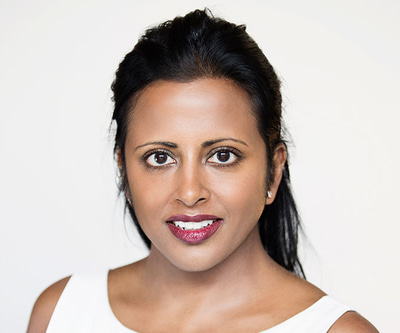- OT
- Life in practice
- Practitioner stories
- Coronavirus: on the ground in Marylebone
On the ground
Coronavirus: on the ground in Marylebone
Consultant ophthalmic surgeon Susan Sarangapani on starting a new job the week before lockdown and spotting eyelid cancer by video consultation

Susan Sarangapani
08 July 2020
As the coronavirus (COVID-19) pandemic transforms the way optometrists practise, OT is sharing the experiences of optometrists across the UK and beyond. If you, or a colleague, is interested in sharing your story please get in touch by email.
In a nutshell
Location: Marylebone
Years qualified: 25
Mode of practice: consultant ophthalmic surgeon.
COVID-19 has affected us in so many different ways. I carry out surgery and reconstruction in patients with cancer. That needed to continue even during lockdown because it is a very time-sensitive treatment. I carry out two operating lists a week at the moment at Spire Harpenden Hospital, which is a private hospital, to make sure urgent eye cases and cancer cases can still get treatment in a timely way.
Routine surgery had to be put on hold during lockdown. The patients we bring in to be examined are only high-risk patients. At OCL we only saw patients if the condition was sight threatening or if they had surgery and there were post-operative complications that needed to be sorted out. The clinic put in great effort to set up video consultations, which have been really popular with our patients.
I started at OCL on 16 March. A week later we closed the clinic. It was an interesting experience. A lot of hard work was going on in the background to make sure that our patients still had access to ophthalmologists if they needed to. We saw a big drop in the number of patients during lockdown, but an increasing number of patients are willing to have remote consultations. I have managed to pick up a number of eyelid cancer cases just from a video consultation.

I think COVID-19 has made all eye care professionals re-evaluate how we see our patients. For the emergency eye service, within the NHS, we have implemented a system where two rooms are used. The doctor speaks to the patient on the telephone, takes a history and will go into a separate room with personal protective equipment on to carry out an examination. Then the doctor goes back to the other room, picks up the phone and they talk about what the findings are and what the treatment plan is. Then, should they need a prescription, that is left outside the door where the patient is.
Before the next patient comes in, everything is cleaned. It does mean that fewer patients can be seen because there is a time lag going backwards and forwards and cleaning the room. Until COVID-19 is under control, I think that is something we will have to do because we can’t put patients at any unnecessary risk.
Now that lockdown is slowly being lifted, OCL is making plans to bring in patients who have had their treatment delayed due to COVID-19. Full precautions are being taken to keep these patients safe – including PPE and social distancing measures. We have found that our patients feel at ease that we have the facilities to carry out their treatment at OCL so that they do not have to visit hospitals and can avoid unnecessary exposure to COVID-19.
As a surgeon, we are on the journey with the patient. It is not them and us
A rewarding career
I like the diversity of what I do. My specialty is so diverse that there are no two same operations within my theatre list on the same day. That really appealed to me.
In one case, the patient was scared to be seen in case it turned out to be cancer. The fact that she had left it so long meant that it was quite debilitating. It was challenging for me because the area that needed to be operated on was large. It was a case of preserving her vision and also giving her a good cosmetic result afterwards. There was the challenge of counselling the patient as well as the surgery itself.
I was able to remove the cancer completely. It is satisfying to be able to do something like that because sometimes you do see a patient and you think ‘I am really going to have to think about what I do here because there are multiple challenges.’ You sometimes feel quite flattered that a patient will put their trust in you. At the end of it all, when they give you a big hug and they are crying, you think ‘Wow, I helped you. That’s great.’
If a child has a droopy lid, and they look different, it is not just making sure that their vision develops properly but managing the psychological aspects. I had one eight-year-old girl who used to wear her hair across her face to try and hide the fact that one eye had a droopy lid. Giving that child the confidence to show her full face and be proud of who she is was amazing.
I feel it is always important to involve the patient in the decision-making process because they are literally putting themselves in your hands. You have to give the patient a realistic goal. For some trauma cases, or post-cancer patients, it is important that they understand what the limitations are so that we are all working together to achieve the best possible outcome. I love talking to people and meeting new people. As a surgeon, we are on the journey with the patient. It is not them and us.
As told to Selina Powell.

Comments (0)
You must be logged in to join the discussion. Log in